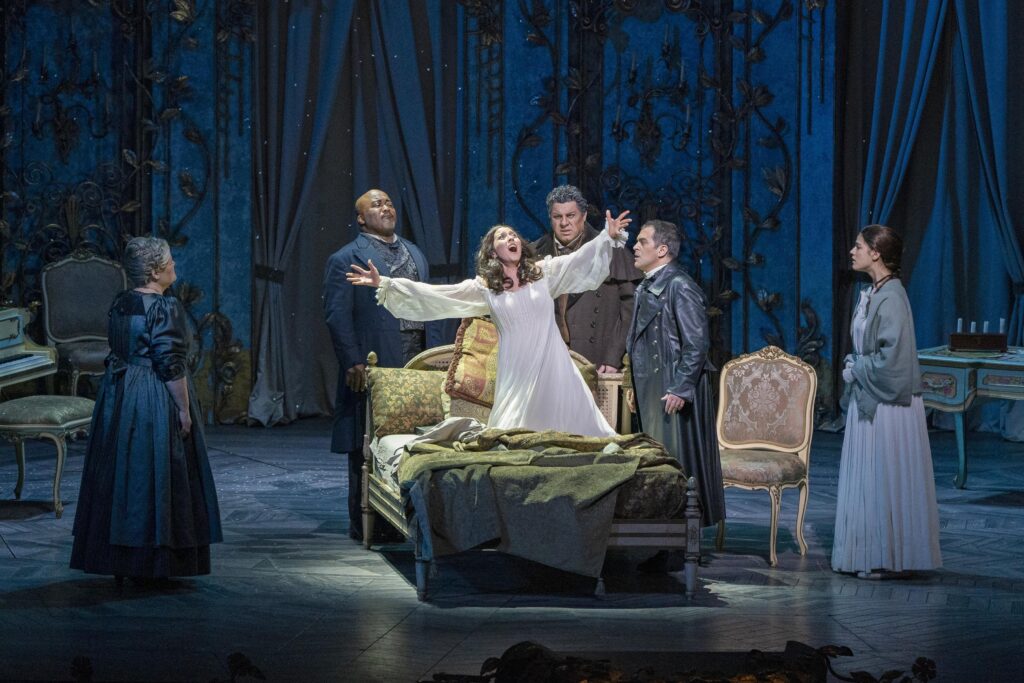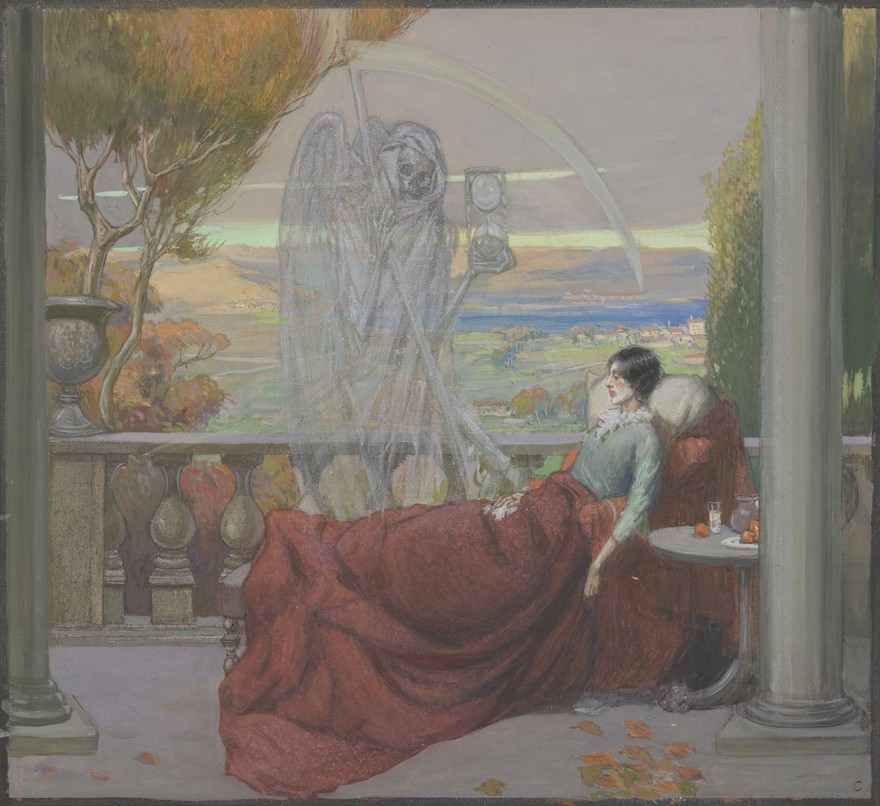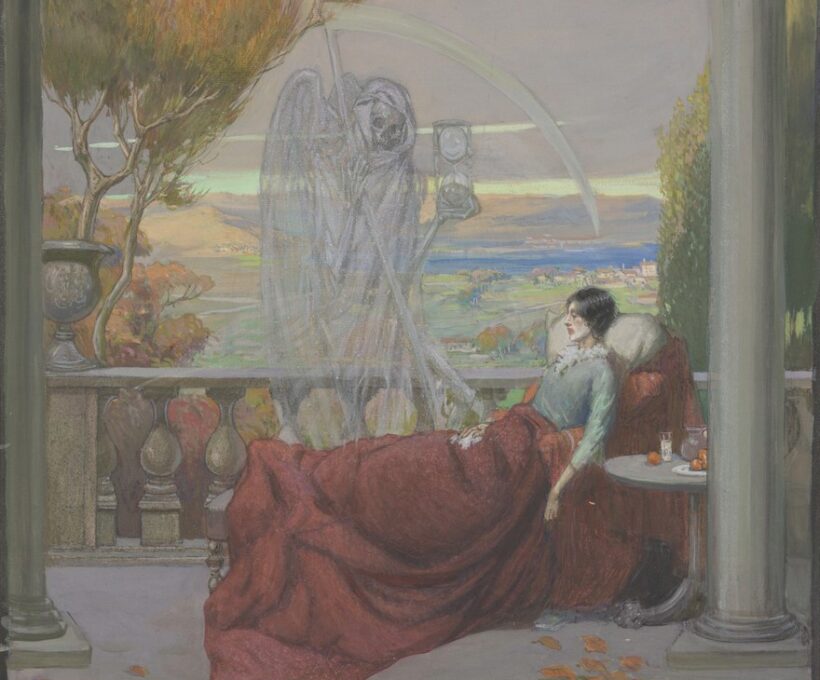Tuberculosis (TB) has been a cause of human misery and death for thousands of years. The World Health Organization estimates TB sickened 10.8 million people in 2023 and killed 1.2 million, maintaining its status as a leading cause of death in the world. Because the arts are concerned with the human condition, TB has been rendered in many genres including, literature, poetry, art, music, film, theater, and opera among others.
In this post, I compare how the final stage of TB is depicted in a classic biomedical text (Harrison’s Principles of Internal Medicine), a mid-1800 novel (La Dame aux Camélias), and an opera (La Bohème). Each one offers a unique perspective that taken together provides a broader view of what people go through during late stages of TB than can be construed looking at each individually.
Biomedical Text
Harrison’s Principles of Internal Medicine, 21st edition. McGraw-Hill; 2022
Hemoptysis develops in 20–30% of cases, and massive hemoptysis may ensue as a consequence of the erosion of a blood vessel in the wall of a cavity. Hemoptysis, however, may also result from rupture of a dilated vessel in a cavity (Rasmussen’s aneurysm) or from aspergilloma formation in an old cavity. Pleuritic chest pain sometimes develops in patients with subpleural parenchymal lesions or pleural disease. Extensive disease may produce dyspnea and, in rare instances, adult respiratory distress syndrome. Physical findings are of limited use in pulmonary TB. Many patients have no abnormalities detectable by chest examination, whereas others have detectable rales in the involved areas during inspiration, especially after coughing. Occasionally, rhonchi due to partial bronchial obstruction and classic amphoric breath sounds in areas with large cavities may be heard. Systemic features include fever in up to 80% of cases and wasting.

Literary Novel
La Dame aux Camélias (Alexandre Dumas fils)
This mid-nineteenth-century novel involves a love affair between a Parisian courtesan, Marguerite, and a young man from a respectable middle-class family, Armand. The threat of this relationship to the family reputation brought it to an end, but it would have been for naught because Marguerite dies from TB. The author, Alexandre Dumas fils, who based this novel on his own history, depicts the effects of TB on Marguerite through the course of the novel, and in particular during the last two months of her life when she experiences the most intense suffering. He does this through Marguerite’s diary entries, which were intended for Armand’s eventual reading.
December 20
I cough blood all the time. Oh! how you would grieve if you could see me now! (p. 190)
January 4
I have just come through a succession of racking days. I never knew how much pain our bodies can give us…I could not breathe. A wandering mind and bouts of coughing share what remains of my sorry existence (p. 192)
January 25
For eleven nights now, I have not slept, I have not been able to breathe, and I have thought that I was about to die at any moment. (p. 194)
February 5
I was brought home half dead and spat blood all night. Today I cannot speak and can hardly move my arms. God! I am going to die! I was expecting it, but I cannot reconcile myself to the thought that my greatest sufferings are yet to come, and if… (p. 196)
At this point, Marguerite could not write another word and her close friend and companion, Julie, had to make subsequent entries for her.
February 18
Her voice went completely, and then she lost the use of her limbs…She is delirious for most of the time, but whether her mind is wandering or lucid, your name is the one which she says when she manages to say anything at all. (p. 197)
February 19, midnight
This morning, Marguerite could not get her breath.
Then, weeping, she kissed me and added: ‘I can speak, but I can’t get my breath when I do. I can’t breathe! Give me air!’ (p. 198)
February 20
It is all over.Marguerite began her moral agony last night, around two o’clock. No martyr ever suffered such torment, to judge by the screams she uttered. Two of three times, she sat bolt upright in her bed, as though she would snatch at the life which was winging its way back to God. (p. 199)
Opera
La Traviata (Giuseppe Verdi / Francesco Maria Piave)
The opera, La Traviata, draws from the novel, La Dame aux Camélias. The character playing the role of Marguerite is named Violetta, and the character playing Armand is named Alfredo. The death scene in this opera is brief and without the portrayals of prolonged suffering described in the novel. Alfredo arrives at Violetta’s bed. She rises up, deluded that her health and strength have returned (known as “spes phthisica”—hope of the consumptive), only to collapse and die in short order. The music and the reactions among the other characters convey the climactic moment of death and emotion instead of bloody expectoration, desperate gasps for air, and “utter torment” of unrelenting pain.

From Differences Among Genres a Fuller Picture
The biomedical text describes clinical effects of TB in technical terms embedded in stilted prose. Clinical manifestations are listed and the pathology involved explained. The account given is shorn of any pathos. The novel, in contrast, offers a vivid and detailed account of the agony accompanying the final stage into death. The language is evocative and formed to tell the story of Marguerite’s end. This account is all pathos shorn of technical details.
Opera is well-suited for TB. As opera scholars Linda and Michael Hutcheons put it in their book, Opera: Desire, Disease, Death, “Tuberculosis is perhaps the perfect operatic disease: it involves the breath—as both inspiration and expiration, as both site of song and locus of disease.” (p. 37) Opera offers distinct features that set it apart from other genres in its reliance on the large-scale splendor and grandiosity it applies to all its components, i.e., staging, music, and lyrics. In the case of La Traviata, these components were necessary to convey the horrors detailed in the novel and generate emotional responses, because in the mid 1800s censorship and cultural norms prevented graphic portrayals of illness and death on stage.
Thus, rather than choosing a preferred genre for perspectives on a particular clinical or health care situation, choosing many of them can yield a more comprehensive understanding.
Also
This topic was covered in an episode of The Clinic & The Person podcast featuring TB in opera. Drs Linda and Michael Hutcheon were guests. In another episode, the effects of TB on beauty ideals during parts of the seventeenth and eighteenths centuries as represented in paintings were covered.
The opera La Bohème (1896) offers similar insights into the final stage of TB as La Traviata, although rather than featuring a courtesan as the victim of TB, the main character is a seamstress living in the over-crowded and poverty-stricken areas.
Credit for title image: Richard Cooper, water color, ca 1912.( License CC by 4.0)




